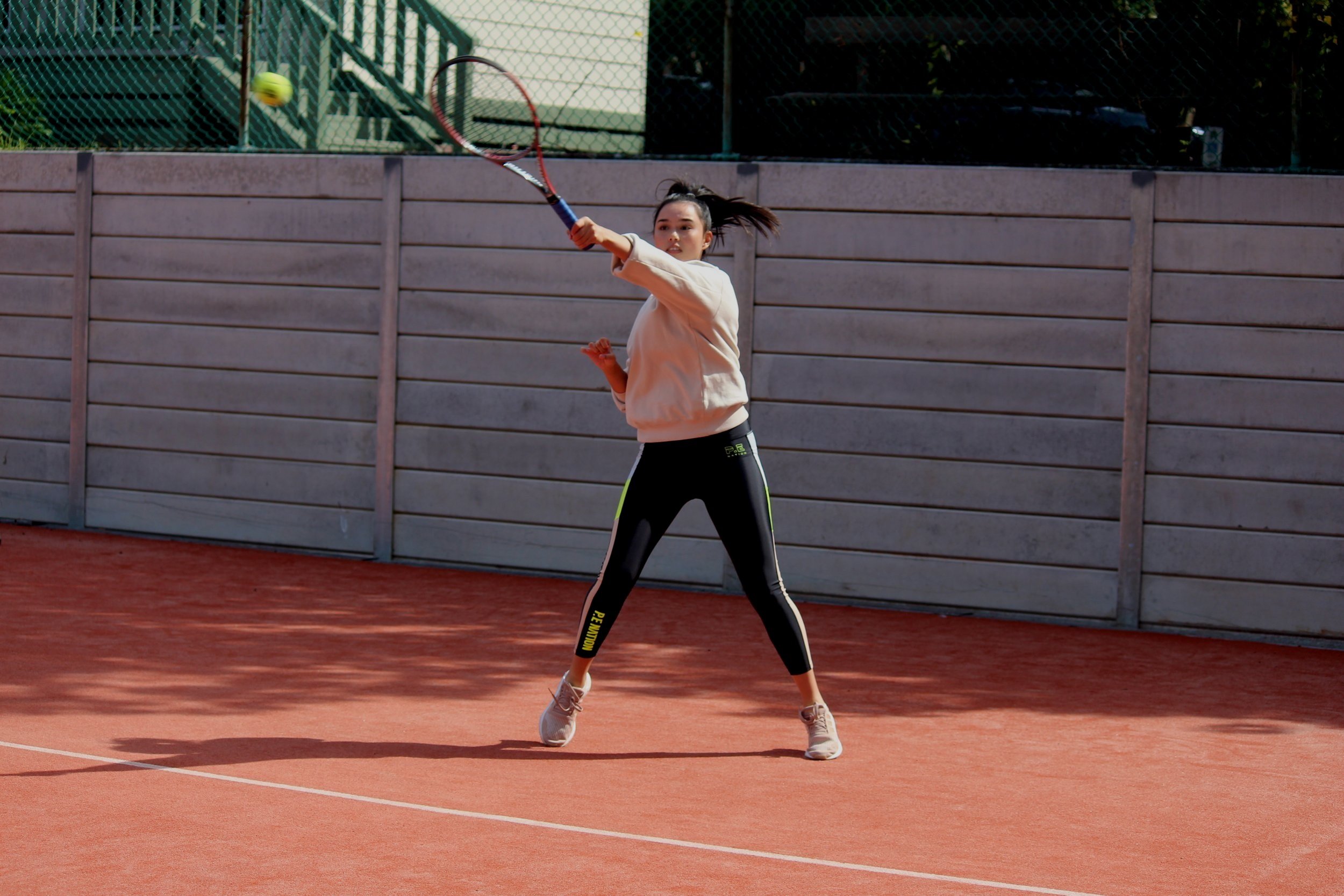
Educational Content
How do you select the best string for you?
The answer to this question can be a long and complicated one. Especially because each person, each string and each racket, is different.
Many factors can be included when selecting a string. People wish to have more power/depth, some wish to have more spin/control, others wish to have more comfort and many wish to have durability so their strings don’t break as often.
But what if we wanted power & a bit of control or comfort & a bit of durability? A hybrid set up, where two different types of strings are placed in a player’s racket, provides us with that opportunity to add multiple characteristics to our rackets. Additionally, some strings in today’s age can actually bring multiple characteristics that we want in the one string.
Sounds complicated right? Trust me, there’s heaps to know when you go looking down this rabbit role! But don’t worry, I am going to take you through the main things each player should know when selecting their preferred string.
Simply put, selecting your string can be broken down into these four characteristics
Power & Depth
Spin & Control
Comfort or stringbed stiffness
Durability
The strings we will be looking into are those which are most popular among beginner, intermediate and advanced players.
The Gut Range
Synthetic Gut
Multifilament
Natural Gut
Polyester
Co-Polyester
These strings are explained in a detailed table at the bottom of this discussion.
Please note, these strings are discussed as they are the most popular, there are many strings in today’s market, so many that it would make this discussion too complicated.
Power & Depth
The most important thing to note for this characteristic is that strings do not provide us with more power. It has been proven that no matter what string or tension we use (whilst hitting the ball with the same energy output), the ball will leave the string-bed at the same speed. However, the difference is not in terms of power or speed, but in fact trajectory!
The Trampoline Effect
In simple terms, the trampoline effect is the impact the ball has on the string-bed and how far it gets pushed back. The larger the trampoline effect, the longer the ball stays on the strings and causes the ball to have a higher trajectory, hence the ball will land deeper in the court.
The gut range for more depth
Naturally, “the gut range” of strings will provide us with more depth. These strings are flexible and soft, allowing the strings to be pushed back easily when compared to polyester strings. If you’re looking to add more depth to your game through your strings, “the gut range” will definitely help.
Naturally, polyester strings are stiff and in-flexible, leading to a much lower trampoline effect. In fact, when polyester strings were first released world-wide in the 1990’s, many stringers actually had trouble stringing at their usual pace as the strings were so much stiffer. However, if “the gut range” isn’t your style, polyester strings can be made to hit with more depth through a lower tension.
A lower tension for a larger trampoline effect
When you have a lower tension, the strings will provide a larger trampoline effect. If you’re wanting a bit more depth on your shots, simply lowering your tension can help.
When you have a higher tension, the strings will provide a lower trampoline effect. A higher tension will assist you with more control in your game.
Please note; power or energy output is created through your body, racket head size or other frame characteristics. Do not think of using strings as tools to provide greater power to your game. Proper technique and different racket frames is where this comes from.
Spin & Control
When producing spin, which in turn allows us to control the ball, the first thing we need to understand is how strings assist us to create spin on ball impact.
The Snap Back effect
When the ball hits our strings, the impact moves our main strings (a racket’s vertical strings) downward and when the ball launches back, the main strings “snap back” to their original position. This snap back effect results in a forward spinning motion on the ball causing it to dip. This is what helps create more topspin!
Polyester strings for greater spin potential!
Polyester strings indefinitely provide greater spin potential. Through multiple attributes which allow them to create a greater snap back effect, polyester strings are becoming very popular choices!
Slickness
Strings which are more slick assist in an easier and faster snap back effect. Almost every polyester string today has slick surfaces, some will be slicker than others or some will have surfaces that will remain slicker for longer periods.
The gut range does provide slick surfaces too, however, as using spin causes strings to rub together and ultimately break, the gut range is not recommended for spin potential due to their lower durability. This will be discussed more in the durability section.
Stiffness
Stiffness from polyester strings helps the strings better snap back into their original position. It’s also important to note that due to stiffer strings, which decrease our depth in the court, those who use polyester strings normally swing at faster racket speeds to increase ball speed. Thus, because faster swing speeds (at an angle to the ball) causes more spin, the stiffness from polyester strings can cause us to create more spin ourselves through technique!
Shape, texture, gauge & materials
Ultimately, there are many factors which could provide spin potential. Shape, texture, gauge and materials used can bring different spin speeds. However, when it comes to these additional attributes, it will start to come down to a person’s individual feel if they like a certain string.
Hitting flat cannot create spin
It is important to remember that spin can only be enhanced if the player is hitting a spin stroke to begin with. Hitting with faster speeds, “brushing” the ball on contact and hitting at an angle are effective ways to increase spin through technique. If you strike a ball flat, it doesn’t matter what string you use, you will not create spin.
Comfort & stringbed stiffness
Stringbed Stiffness refers to how hard or soft it feels when we make contact with a ball. Generally, players today tend to prefer a little softer feel, but due to great string advancements, they will occasionally sacrifice this feel to enhance spin potential or durability. When players feel their stringbed stiffness is too high, they will frequently refer to it as being like “hitting with a board”. When they feel stringbed stiffness is too low, they will say “it feels mushy”.
Polyester or Gut range for comfort?
If you’re set on having more spin potential & durability for your game, polyester strings do provide a softer range of strings. As these allow us to hold multiple characteristics in the one string, these are great additions that are worth trying.
However, if you’re not set on spin potential & durability, “the gut range” is the best for comfort! Those who may have elbow, arm or shoulder problems or even just love the feel of a comfortable strike, lean towards this range. Natural gut will provide the best source of comfort, then followed by Multifilament and lastly synthetic gut.
Durability
In most cases, strings break due to the increased friction of strings rubbing together. As a result of all new players today hitting more topspin, the snapback effect constantly keeps our main strings moving and slowly being “cut”.
For most of us, this should be considered the least important characteristic to consider. This is because most of us do not frequently break strings even if we use the least durable strings available. The important thing to be aware of here is whether you are happy with how long your strings have been lasting.
It’s important to refer to how long a string lasts in terms of hours played rather than how many weeks or months it has been since it was strung. This is because some weeks you will play more tennis than others.
Polyester for durability!
Polyester strings are hands down the most durable strings. Due to the materials used, these strings outlast “the gut range” by miles. Most people today, especially those who hit with lots of spin, prefer polyester strings as they’re longer lasting and they do not wish to constantly restring their rackets every week.
Last thoughts
Throughout my experience of restringing, this is what I have noticed. If you have no arm issues, if you’re not under the age of 10 or over the age of 50. Polyester. Polyester. Polyester. Polyester.
Do note that there are people with arm issues who use polyester strings. This goes the same for kids under 10 and adults over 50 as proper technique is an exception!
Polyester strings are what I restring 90% of the time. As a result of the amazing developments in these strings such as; softness, stiffness, feel, shape, durability and so on, many people are leaning towards these strings.
However, this doesn’t mean “the gut range” is at all bad! Honestly the best set up I’ve ever had on my racket has been a hybrid set up with multifilament strings. But as I was playing 8 – 12 hours per week, I was breaking my strings weekly. Hence durability is becoming a major characteristic for all players, drawing us in towards polyester strings.
Information provided is discussed by The United States Racquet Stringers Association (USRSA) and Tennis Warehouse University

